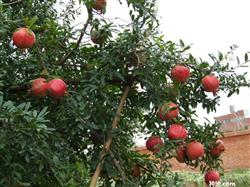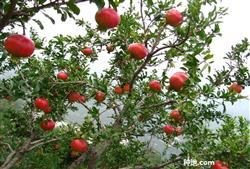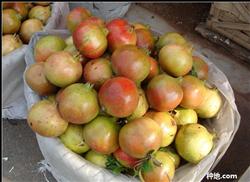What are the common pests of pomegranate trees

What are the common pests of pomegranate trees? Please introduce the following kinds of pomegranate pests: Japanese tortoise wax scale, commonly known as scale insects, belonging to Homoptera, Coccidae. When the nymph is fixed on the leaves or shoots, it absorbs sap and secretes mucus, which induces coal pollution, affects photosynthesis, weakens the tree potential, causes a large number of fallen leaves and fruit, and in serious cases can lead to sterilization or even death of the whole tree. Prevention and control methods: (1) chemical control. It is a favorable time for chemical control from nymph hatching to wax shell formation; in production, the damage can be controlled by spraying 1000 times of 25% imidophos, 1000 times of 50% malathion, 400 times of 50% carbaryl wettable powder or 1000 times of dichlorvos EC every 7-10 days for 2-3 times. (2) protect and utilize natural enemies. There are many kinds of natural enemies of Japanese tortoise wax scale, such as ladybugs, lacewings, parasitic wasps and so on. Pomegranate stem window moth, also known as pomegranate window moth, occurs in most pomegranate producing areas in China. Larvae drill into new shoots and perennial branches, which weakens the tree potential, affects fruit yield and quality, and can cause death of the whole plant in serious cases. Control methods: (1) in the pomegranate growing season, often check the branches, find the killed new shoots, cut off the branches from the lower end of the last faecal hole in time, and eliminate the larvae. (2) Pesticide control. In the peak incubation period, spray control with 1000 times of Diema mixture, 1000 times of dichlorvos EC or 2.5% of 3000 times of enemy kill, and the effect is good. After the larvae have eaten into the branches, they can use tools such as waste syringes to inject 400-500 times of dichlorvos into the insect track, or dip dichlorvos with cotton balls into the bores, seal the yellow mud and kill the larvae. Click to get more pomegranate planting techniques click to get more fruit planting techniques
- Prev

How to plant pomegranate trees for high yield
How can pomegranate trees be planted with high yield? Please introduce pomegranate flowers and fruits, juicy and delicious, with rich nutritional value and medicinal value. In addition to fresh food, it can also be processed into fruit juice, fruit wine and so on. The cultivation techniques of short, dense and early high yield of pomegranate are introduced as follows: first, build garden 1, deep ploughing and soil preparation. October thirtieth.
- Next

How to harvest pomegranate?
How to harvest pomegranate? Please introduce the pomegranate harvest should be carried out by stages according to maturity and variety characteristics. The ripening sign of pomegranate fruit is that the pericarp of ① changes from green to yellow, the colored varieties are fully colored, and the fruit appears luster. The fruit edge of ② appeared. The red or silver-white needles in the pulp cells of ③ are fully visible.
Related
- Moge, come on! The staff of the peasant association in the producing area of cantaloupe were frightened when the crowd gathered.
- Causes and Solutions of low Fruit setting rate of Apple
- Symptoms and control measures of passion fruit virus disease
- Fruit growing lesson: how do apple orchards keep high yields?
- Can you build orchards in the mountains? What are the pros and cons?
- How to manage the coloring period of Crisson grape?
- This paper introduces the processing technology of two kinds of fig products.
- How much is a month for retired teachers in rural areas by 2020?
- How can strawberry planting increase sugar content? We should pay attention to management in many aspects.
- What are the cultivation techniques on how to improve the yield of golden fruit?

